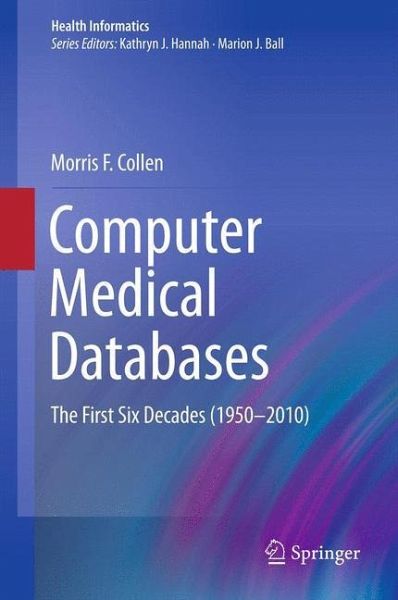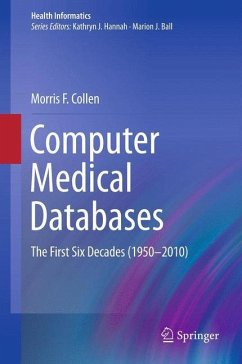
Computer Medical Databases
The First Six Decades (1950-2010)
Versandkostenfrei!
Versandfertig in 6-10 Tagen
76,99 €
inkl. MwSt.
Weitere Ausgaben:

PAYBACK Punkte
38 °P sammeln!
Created by the legendary Dr. Morris F. Collen, now in his nineties, this book maps the journey from the first, basic medical informatics databases to the hugely complex information systems which are now such a fixture in clinics and hospitals around the world.
Chapter 1 offers an overview of the basic computer technology. Each succeeding chapter, describes the problems in medicine, followed by a review in chronological sequence of why and how computers were applied to try to meet these problems. Only the technical aspects of computer hardware, software, and communications are discussed as they are necessary to explain how the technology was applied. This approach generally led to defining the objectives for applications of medical informatics. At the end of each chapter, the author summarizes his personal views and interpretations of the chapter contents. Although the concurrent evolution of medical informatics in Canada, Europe, and Japan certainly influenced workers in the United States, the scope of this historical review is limited to the development of medical informatics within the United States. Furthermore, this review is limited to electronic digital computers; it excludes mechanical, analog, and hybrid computers.














